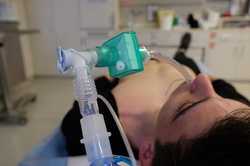
Hospitals may be liable for injuries caused by supply shortages and defective equipment. The COVID-19 pandemic has exposed significant shortfalls and shortcomings in healthcare. These are placing patients at unnecessary risk to their health and safety. Individuals who suffer injuries, and survivors of those who pass away, may have the option to pursue compensation from healthcare providers. Because of current circumstances, individuals and their loved ones should contact an attorney prior to undergoing treatment with ventilators in order to ensure proper documentation and treatment.
Defective Ventilators Can Cause Death
Faulty equipment is not unique to the COVID-19 pandemic. Indeed, defective equipment has always had the ability to cause injury or death. Over the years, numerous lawsuits have prevailed over everything from saws that overheat and cause burns to faulty equipment that can’t be sterilized and causes the spread of infections. Most recently, defective ventilators in Russia may have malfunctioned and caused the death of five patients. These same ventilators are in the United States and their use has been discontinued pending results of an investigation into their safety.
Defective ventilators can cause pneumothorax, lung damage, and potential oxygen toxicity similar to vaping injuries. They can cause pulmonary embolisms and blood clots to form which can cause strokes and heart attacks. A defective ventilator may push too much air into the lungs, or may fail to provide enough airflow. This can damage the cilia, alveoli, bronchi, and other structures of the lungs. This can complicate the individual’s recovery and may cause permanent loss of lung function.
Supply Shortages Can Cause Severe Injury
The COVID-19 pandemic has also cause significant problems in hospital preparedness and the supply chains patients rely upon. Many hospitals in Illinois have suffered significant shortages of critical equipment. Many do not have adequate supplies of gowns, masks, sterilization equipment, and of course, the ever critical ventilators required when patients are no longer able to breathe on their own without the assistance of mechanical ventilators. As a result of these shortages, hospitals have “gone outside the box,” and purchased many supplies, including ventilators, from new, unproven supply sources.
In more than a few instances, these supplies have proved hazardous to the health of doctors and nurses, and the patients they are charged with treating. This faulty equipment not only facilitates the spread of the virus, it can result in the transmission of ever greater quantities of virus into already injured patients. This can negatively impact their health and increase the likelihood of causing a fatal exposure.
Medical Malpractice Liability in the Middle of a Pandemic
Pandemic or not, hospitals have a duty of care to provide patients with services and treatments that will benefit their health. Healthcare providers are not released from their duties to provide adequate staff, supplies, and services. When hospitals fail to provide an adequate level of care and provide lifesaving treatments to patients in need, they are negligent in their duty to the public.
Of course, healthcare providers will argue that the COVID-19 pandemic has created unusual circumstances, and that under normal circumstances, they would be considered adequately staffed and prepared to render service. Thus, liability could come down to the types of instructions a court gives to a seated jury. If the court instructs the jury to consider the hospitals level of care and service under normal circumstances, they may not be held liable. However if the court instructs the jury to consider that the pandemic should have been predicted, and that adequate information was available prior to its arrival in the area, the jury can consider a cost-benefit analysis.
For example, the patient or survivors may argue that the cost of a $40,000 ventilator from a trusted source, as opposed to a $10,000 purchase of a defective ventilator from an unproven source, was justified based on the estimated value-per-life of $3 million. Injured parties could argue that the attempt of the healthcare provider to save money caused themselves or their loved ones harm that was otherwise avoidable.
Documenting Injury & Death in a Pandemic
Documentation of injury is difficult under present circumstances. Loved ones and others are being denied access to their loved ones in the hospital. This makes it harder to monitor their health. Moreover, many healthcare providers are overwhelmed which is resulting in recording errors on medical charts and other crucial evidence. Complicating this is the fact that mortuaries are operating at maximum capacity and autopsies are not being conducted due to the sheer number of dead. This makes it hard to examine the individual to determine whether or not a defective ventilator or other piece of equipment contributed to the individual’s death. However, the equipment is still accessible and a medical malpractice attorney may be able to establish a pattern of injuries and deaths occurring to others who used the same device.

